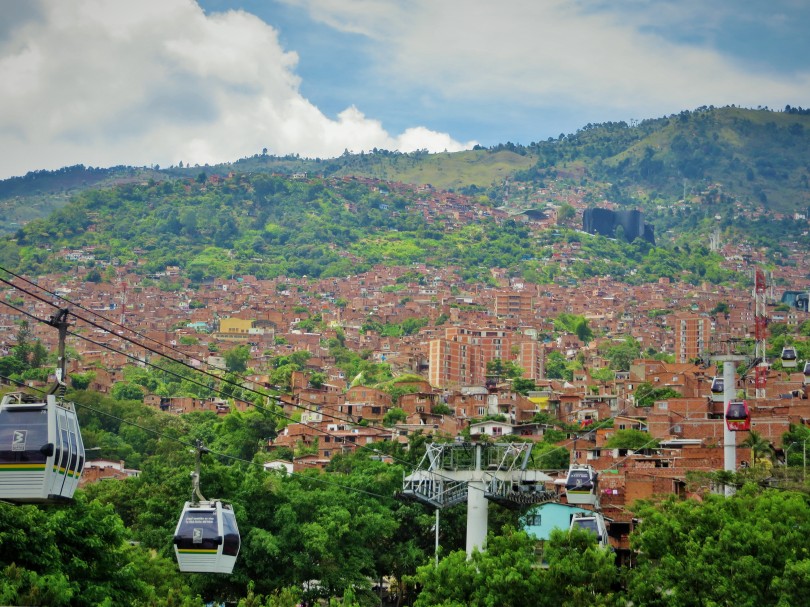
A two week vacation recently marked the halfway point of this year-long Colombian adventure. It was a holiday that I desperately needed after all the work I’d been doing last semester. Hah.
This trip saw us venturing inland, leaving the costeños behind and travelling to the land of the paisas. We hopped on an early flight to Medellín on June 20th with the low-cost airline Viva Colombia, and flew back from Cali fourteen days later. Stepping off the plane, we were instantly relieved to escape the suffocating heat and humidity of the coast, and from there things just kept getting better.
Medellín was once the most dangerous city in the world, made infamous by kidnappings and car bombs, murders and corruption, drug cartels and Pablo Escobar. Now, Colombia’s second largest city and the capital of the Antioquia department is La Ciudad de la Eterna Primavera, the City of Eternal Spring. Located in a valley, the sprawling city crawls its way up the slopes of the surrounding mountains. It is populated by polite and hospitable paisas, and is dotted with parks and plazas, museums, libraries and universities.
By far, the best 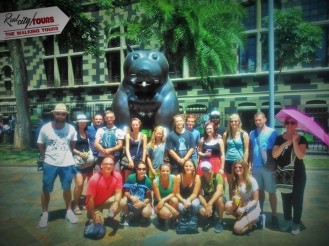 thing we did in the city was the free walking tour with Real City Tours. Our guide, Hernán, was truly passionate about his city, and went to great lengths not only to show us some of the highlights of downtown Medellín, but to give us insight, coloured by personal experience, into the history and culture of the city.
thing we did in the city was the free walking tour with Real City Tours. Our guide, Hernán, was truly passionate about his city, and went to great lengths not only to show us some of the highlights of downtown Medellín, but to give us insight, coloured by personal experience, into the history and culture of the city.
He gave us an overview of the conflict between the government, right-wing paramilitaries and leftist guerillas, and the real life consequences for citizens. Hernán described the Medellin of his childhood, where mothers worried that they wouldn’t see their kids again as they waved goodbye at school; where people were murdered or disappeared daily, and no-one walked the streets after dark.
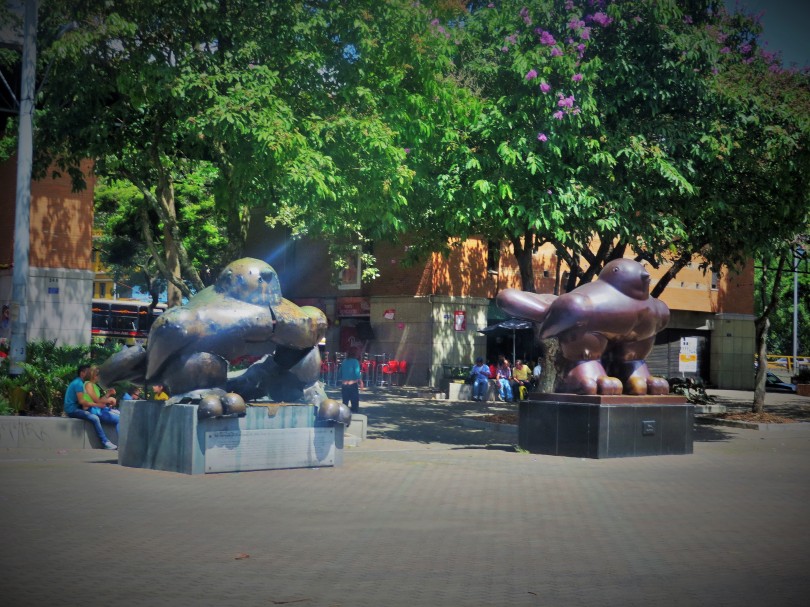
In 1995, a bomb hidden beneath this statue exploded during a concert in San Antonio park, killing about thirty people. The wreckage of the Botero statue stands alongside the new bird to commemorate those victims.
The emphasis of the tour was the immense progress that has been made over the past decade in Medellín. Hernán explained that this is mostly due to the government’s program of “social urbanism”, whereby spaces that were once symbols of crime and corruption have been reclaimed for the public. A building that once housed drug-dealers and prostitutes is now the Centre for Education, and plazas that were once dangerous are now buzzing with musicians, fruit vendors and businessmen on their breaks. That’s not to say that the city is crime free; of course, gangs still fight to control illegal markets, pickpockets are prevalent, and there are still neighbourhoods that are best avoided.
The greatest symbol of Medellín’s transformation is undoubtedly the metro. The only metro rail system in Colombia, it is a source of great pride for the people of the city, and it is kept absolutely spotless. A central aspect of “social urbanism” is the attempt to combat the exclusion of the city’s poor, and in this the metro is instrumental. The poorest barrios on the edges of the city are now linked by the metro and the cable cars that sail over the hills. Outdoor escalators have even been installed in a neighbourhood where residents once had to climb hundreds of stairs every day. And as a result of all this, Medellín was named the world’s most innovative city in 2013.
Over five days, we explored as much of the city as possible. We spent one Sunday morning wandering around Santo Domingo Savio. What was once one of the most dangerous neighbourhoods in the city is now a vibrant barrio of narrow streets and twisting staircases, dominated by the Spanish Library perched precariously on the hillside.
We visited Parque Arví – a huge reserve of natural forests that feels secluded and tranquil, but is only a twenty minute cable car ride onwards from Santo Domingo. We laughed our way through a free salsa lesson at our hostel and enjoyed the live band at a salsa club, and we treated ourselves to a bit of international cuisine – Thai, Indian, Korean – since we have yet to find any in Barranquilla. We drank beer in the parks and admired the colourful street art. We strolled around the botanical gardens and tree-lined streets of fancy Poblado. We passed a few entertaining and educational hours at Parque Explora – an interactive science museum with an aquarium and vivarium.
Medellín is a cosmopolitan yet still very Colombian city, and is entirely representative of the progress the country has made in the last twenty years. The city is full of joy and vitality, despite its bleak history. Proud citizens welcome international travellers, eager to do their part to change the city’s image. It seems like a great place in which to live (something we’re considering for next year), but also offers visitors a unique experience.
***
Our next stop, Guatapé, will be covered in my next post 🙂
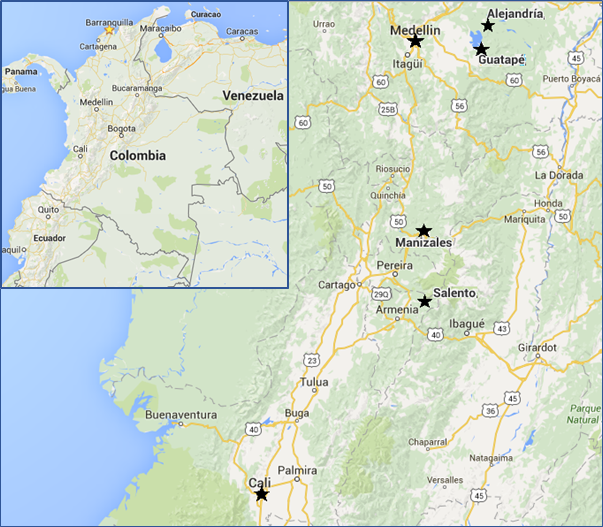
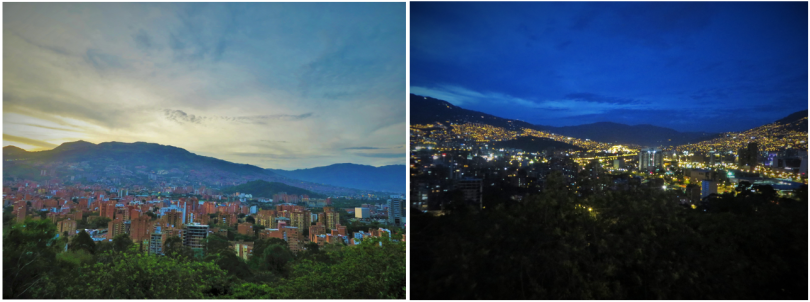

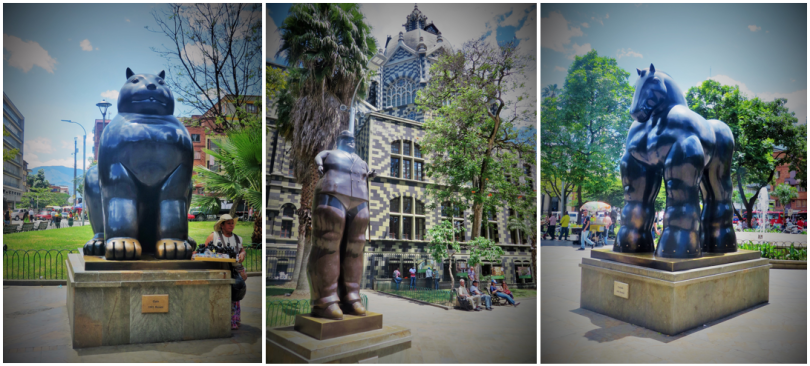
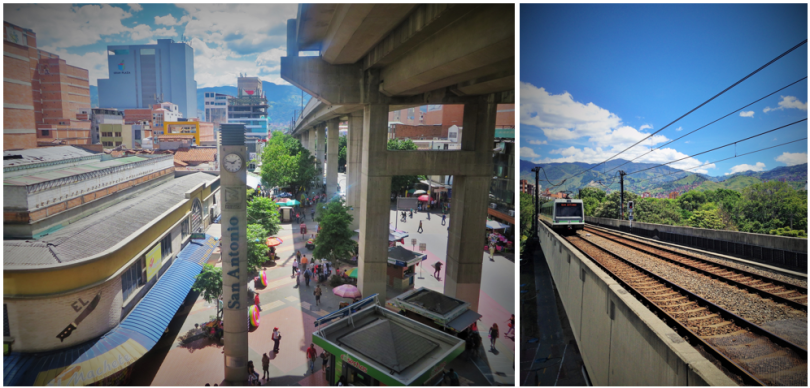
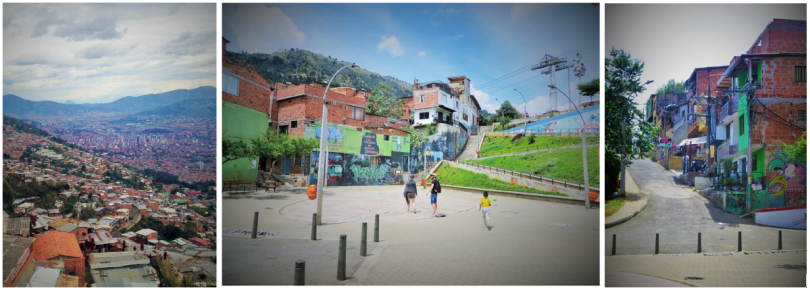
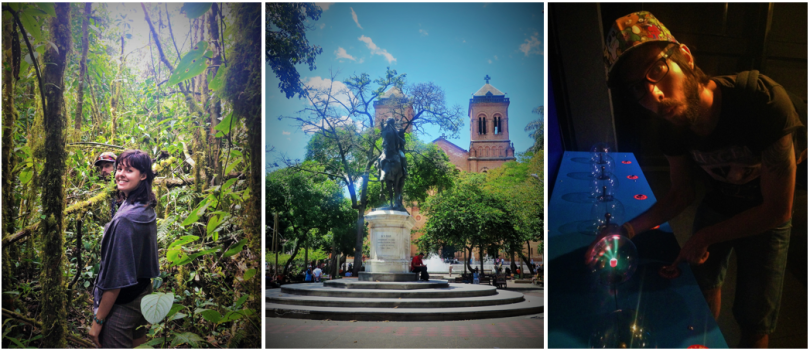
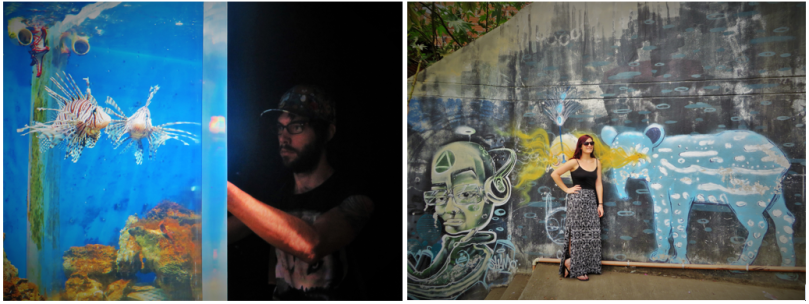
I’m so proud of you my child. Excellent article and I can’t wait for the next post. Love you xx
LikeLiked by 1 person
Pingback: Two Colombian Pueblos | escaping stasis
Your blogs are such a pleasure to read, Cayley. So well written, informative and interesting. I am always sorry when it comes to the end! Love the pictures too, as they really bring the places to life. We miss you!
LikeLiked by 1 person
Pingback: Manizales: Cathedrals and Coffee | escaping stasis
Pingback: Cats and Capybaras in Cali | escaping stasis